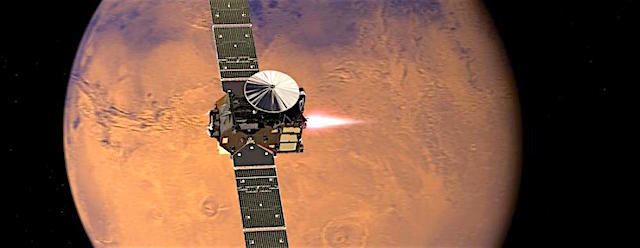 Meeting Mario Montagna – ExoMars 2016 Avionics Systems Engineer – Exploration & Science Italy Head of Avionics, Data Systems & Communications Design department.
Meeting Mario Montagna – ExoMars 2016 Avionics Systems Engineer – Exploration & Science Italy Head of Avionics, Data Systems & Communications Design department.
The ExoMars 2016 spacecraft was launched by a Proton rocket on March 14, 2016. About seven months later its Trace Gas Orbiter (TGO) module was injected into orbit around Mars. Several engine burns over the last few months have further adjusted its orbit. The next step is to circularize the orbit, reducing its period to about two hours, by conducting aerobraking maneuvers over a period of more than 12 months. Just back from the European Space Operations Centre (ESOC) in Darmstadt, where he participated in the start of the aerobraking phase, Mario Montagna shares his insights on this mission.
Space Q&A: The TGO has the very delicate task of detecting minute traces of gas in the Martian atmosphere, especially methane, which could indicate the presence of life. How is it doing?
M. Montagna: The spacecraft is in good shape, fully operational and ready to start this challenging phase. In preparation for the aerobraking phase, the TGO conducted a series of maneuvers to shift its angle of travel with respect to the planet’s equator to almost 74°. This inclination will provide ideal coverage of the surface for the instruments, while still offering good visibility for relaying data from current and future landers – including the ExoMars rover scheduled for launch in 2020…. [More at link]








